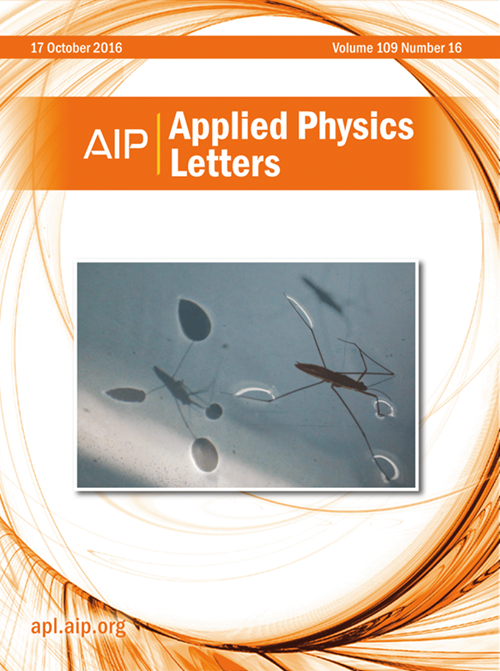Engineered MoSe2-CuO interfaces for next-generation non-enzymatic glucose sensors
IF 3.5
2区 物理与天体物理
Q2 PHYSICS, APPLIED
引用次数: 0
Abstract
The development of highly sensitive, stable, and cost-effective glucose sensors is critical for non-enzymatic glucose detection. Traditional enzymatic sensors suffer from poor stability and operational constraints, while some non-enzymatic sensors are expensive, prone to interference, and have short detection ranges. To address these challenges, the MoSe2-CuO nanocomposite has been prepared as an excellent electrocatalyst for glucose oxidation, leveraging the synergistic properties of two-dimensional (2D) transition metal dichalcogenides and metal oxides. The MoSe2-CuO heterostructures show enhanced electrochemical response due to strong interfacial coupling, improved electron transport, and abundant active sites for glucose adsorption and oxidation. It is found that the MoSe2-CuO nanocomposite-based sensor possesses a fast response time of 3 s, a low limit of detection of 0.025 μM, a high sensitivity of 2406 μA mM−1 cm−2, and a broad linear range for glucose detection. Furthermore, the composite electrode demonstrates excellent selectivity against common interfering species and exhibits long-term stability, ensuring reliability for real-world applications. The practical applicability of the proposed sensor is also validated through glucose detection in a fruit juice sample. Thus, the MoSe2-CuO nanocomposite may pave the way for next-generation non-enzymatic glucose sensors with high efficiency, stability, and affordability for its real-life applications.设计用于下一代非酶葡萄糖传感器的MoSe2-CuO接口
开发高灵敏度、稳定、低成本的葡萄糖传感器是非酶促葡萄糖检测的关键。传统的酶传感器存在稳定性差、操作受限等问题,而一些非酶传感器价格昂贵、容易受到干扰、检测距离短等问题。为了解决这些挑战,利用二维(2D)过渡金属二硫族化合物和金属氧化物的协同特性,制备了MoSe2-CuO纳米复合材料作为葡萄糖氧化的优良电催化剂。MoSe2-CuO异质结构由于界面耦合强、电子传递改善以及丰富的葡萄糖吸附和氧化活性位点而表现出增强的电化学响应。结果表明,基于MoSe2-CuO纳米复合材料的传感器具有3 s的快速响应时间、0.025 μM的检测下限、2406 μA mM−1 cm−2的高灵敏度和较宽的线性范围。此外,复合电极对常见干扰物质具有优异的选择性,并具有长期稳定性,确保了实际应用的可靠性。通过果汁样品中的葡萄糖检测,验证了该传感器的实用性。因此,MoSe2-CuO纳米复合材料可能为下一代具有高效率、稳定性和可负担性的非酶葡萄糖传感器铺平道路。
本文章由计算机程序翻译,如有差异,请以英文原文为准。
求助全文
约1分钟内获得全文
求助全文
来源期刊

Applied Physics Letters
物理-物理:应用
CiteScore
6.40
自引率
10.00%
发文量
1821
审稿时长
1.6 months
期刊介绍:
Applied Physics Letters (APL) features concise, up-to-date reports on significant new findings in applied physics. Emphasizing rapid dissemination of key data and new physical insights, APL offers prompt publication of new experimental and theoretical papers reporting applications of physics phenomena to all branches of science, engineering, and modern technology.
In addition to regular articles, the journal also publishes invited Fast Track, Perspectives, and in-depth Editorials which report on cutting-edge areas in applied physics.
APL Perspectives are forward-looking invited letters which highlight recent developments or discoveries. Emphasis is placed on very recent developments, potentially disruptive technologies, open questions and possible solutions. They also include a mini-roadmap detailing where the community should direct efforts in order for the phenomena to be viable for application and the challenges associated with meeting that performance threshold. Perspectives are characterized by personal viewpoints and opinions of recognized experts in the field.
Fast Track articles are invited original research articles that report results that are particularly novel and important or provide a significant advancement in an emerging field. Because of the urgency and scientific importance of the work, the peer review process is accelerated. If, during the review process, it becomes apparent that the paper does not meet the Fast Track criterion, it is returned to a normal track.
 求助内容:
求助内容: 应助结果提醒方式:
应助结果提醒方式:


